The Fellow Clara French press is $100 – is it really worth that much?
The Fellow Clara French press is an exceptional – if overpriced – coffee maker
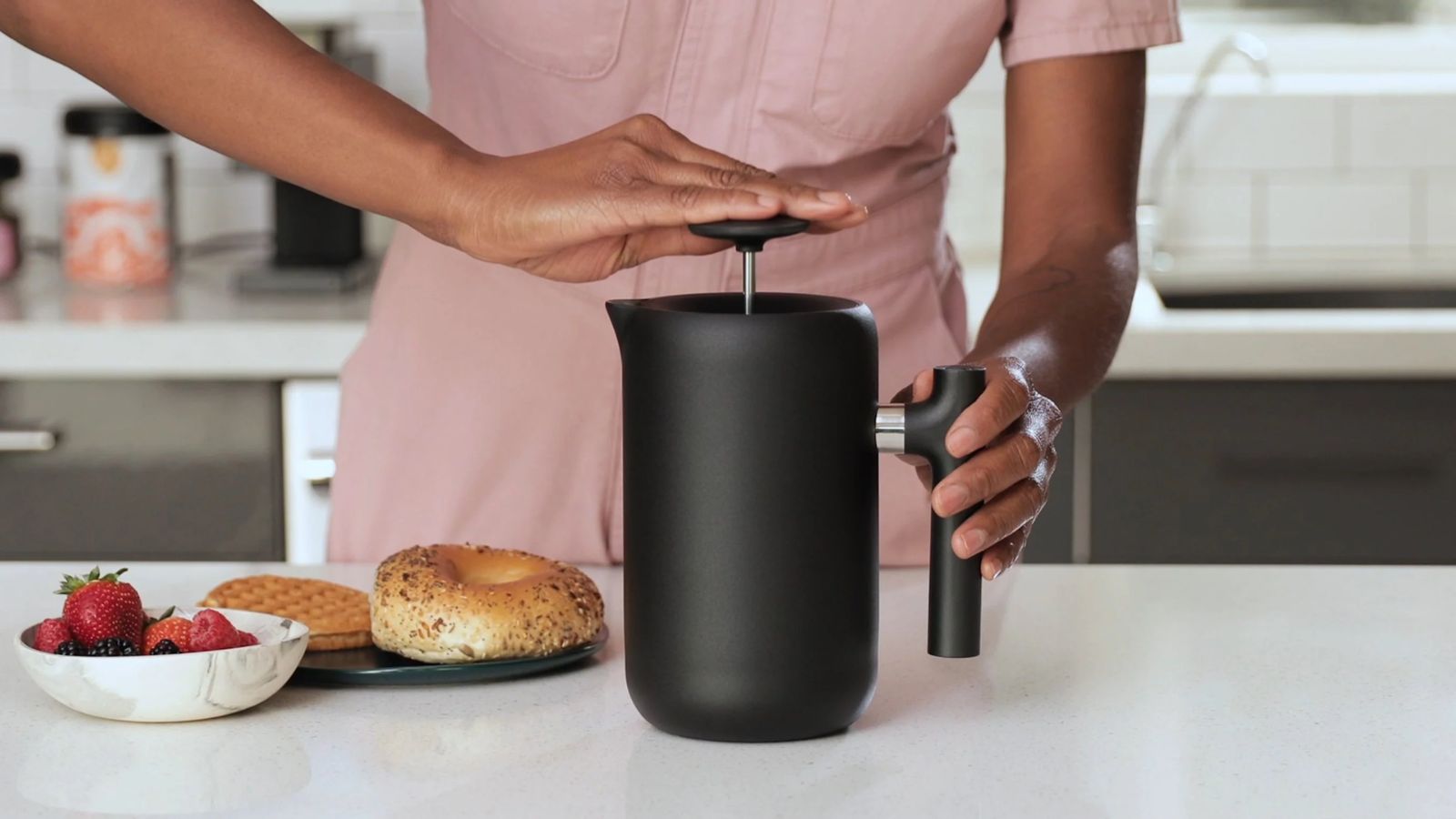
Fellow has solved some of the most common coffee problems in the Clara. It's durable, an incredible insulator, has an easy all-round filter, and an excellent seal. There's even markers for rough coffee measurements. Seemingly, it has it all, but it comes with a triple-figure price tag.
-
+
Durable build
-
+
Excellent insulation
-
+
Makes rich, smooth coffee
-
+
Comes with agitator
-
+
Offers guidelines for rough measurement
-
-
Very expensive
You can trust Homes & Gardens.

I've loved a lot of French presses in my time. They're a wonderful way to slow brew your coffee, especially on a Sunday, but the classic design has plenty of flaws: the carafe is (very delicate) glass, they're not always well insulated, you can only pour when the spout is in a very specific position, and they can be tricky to clean.
This sounds like a lot of downsides, but if anyone could solve them, it would be Fellow. The company splashed onto the coffee market with the best coffee grinder you can buy, one of the best pour-over coffee makers in the world, and even make Oprah's favorite gooseneck kettle. I was excited to try their French press and see if lived up to the hype, and I found that they make one of the best French presses around.
The Fellow Clara is double-walled, so is essentially impossible to break. You can pour from it in any direction, and it comes with an agitating stick too. They've packed in plenty of useful features, but this comes at a cost. It sits around $100, often more. I tested it out to see whether it's worth the splurge.
Specifications

| Dimensions | 7.9 x 4.5 x 6.7 in |
| Weight | 2 lbs |
| Materials | Stainless steel, plastic, non-stick coating |
| Capacity | 24 oz |
Unboxing
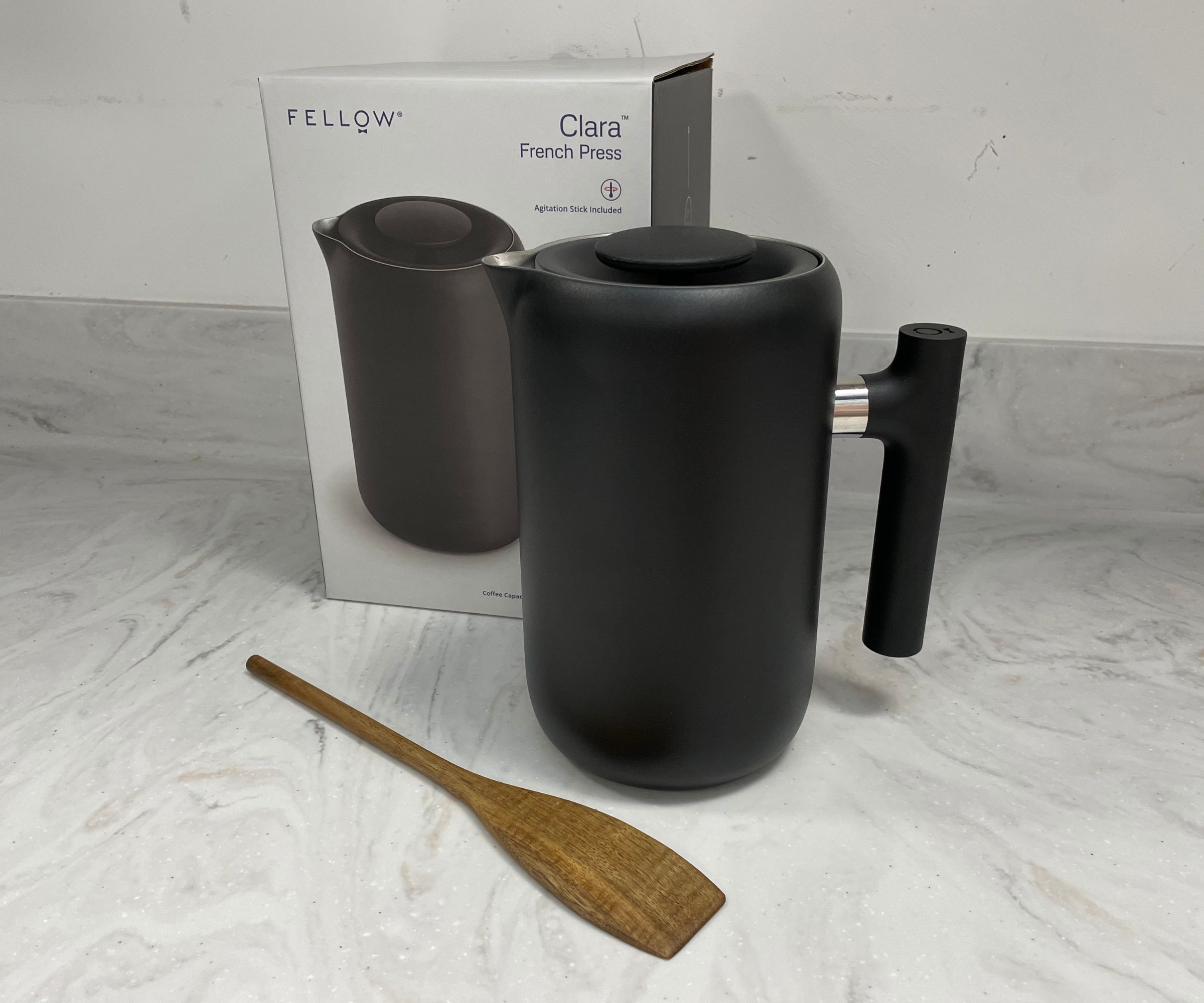
As you might expect, the Fellow was a delight to unbox. I thought the larger cardboard box seemed quite small, imagining there would be lots of packaging inside. However, the Fellow fitted snugly inside a cardboard box with some instructions, a wooden agitator stick, and that's it. French presses are often straightforward and this is a brilliant example of that simplicity.
I tested a few French presses alongside the Fellow Clara and, on the countertop, this was one of the smallest. It's a little stout, so was wider than other options, but that's how it achieves a respectable 24 oz capacity.
Alongside the other French press options, the Clara was also one of the most distinctive and the most stylish. It looked like it should belong in a ski chalet, or that it should be some sort of decorative piece on a mantle rather than simply a coffee maker. Of all the ones I lined-up for testing, this one caught all the experts' eyes the most. Even the ones who don't drink French press coffee were finding ways that they could use a French press for more than just coffee to see whether they could justify investing in the Clara.
Who would it suit?
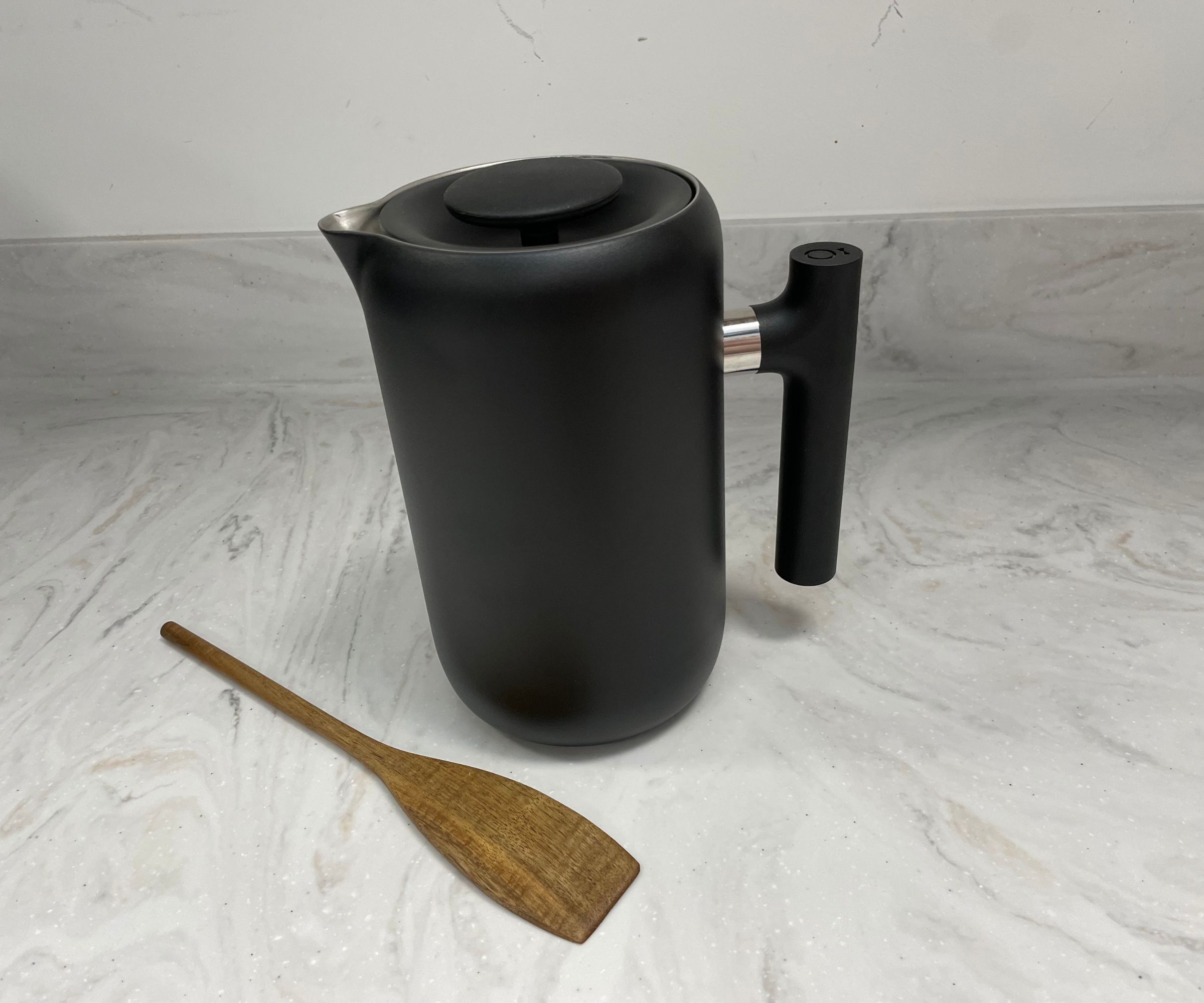
If you're willing to put aside the price tag for a moment, there's a lot of people to whom the Fellow Clara would appeal. First of all, it's crafted from stainless steel. If you're like me and you're a little (or a lot) clumsy, you'll know that all glass products come with the risk that, one day, you'll somehow break them. The fact that the Clara is made from a more durable material means that it's much sturdier.
Design expertise in your inbox – from inspiring decorating ideas and beautiful celebrity homes to practical gardening advice and shopping round-ups.
In spite of the metallic build, it's lightweight, easy to lift, and even easier to pour. Fellow has designed an all-round filter, so you can place the plunger in as is. There's no need to line up the spout and filter, dribbling coffee down your carafe, it's all incredibly easy. This might make it sound like it appeals to beginners, which it does, but Fellow has also integrated some useful features for more experienced French press brewers. I've never had an agitator included in a French press box before, but it's a great reminder that you'll get a smoother cup of coffee if you can evenly saturate your grounds.
What is it like to use?
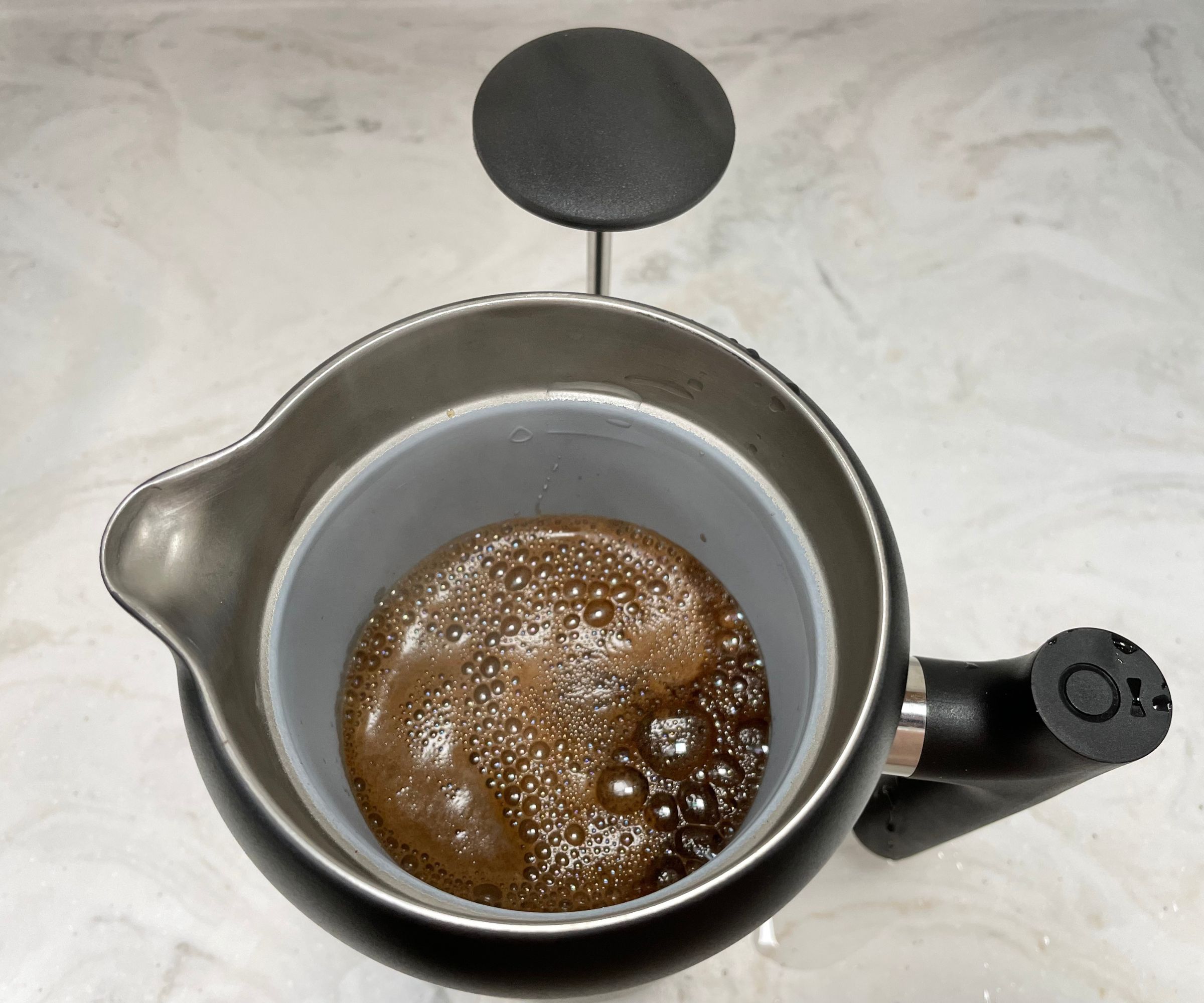
This was by far the most impressive French press I've tested. The double-walled, stainless steel carafe has some rubber feet on the bottom, so it sits really nicely on the countertop. Inside, the lining is non-stick, making it easy to clean, and worry-free to fill. There's also some subtle markers on the inside lining to suggest levels for your your coffee grounds and your water. This is helpful if you're a novice or if you don't want to get the coffee scales out. It also overcomes the obvious issue of stainless steel, which is that you can't see inside the carafe.
I filled the Clara with coffee grounds and hot water and then waited for two and a half minutes before using the agitator. I could see my grounds turn from dark brown to a more creamy hazelnut hue. The agitator didn't drip or create much mess when I lifted it out and then, another three minutes later, I let the plunger down.
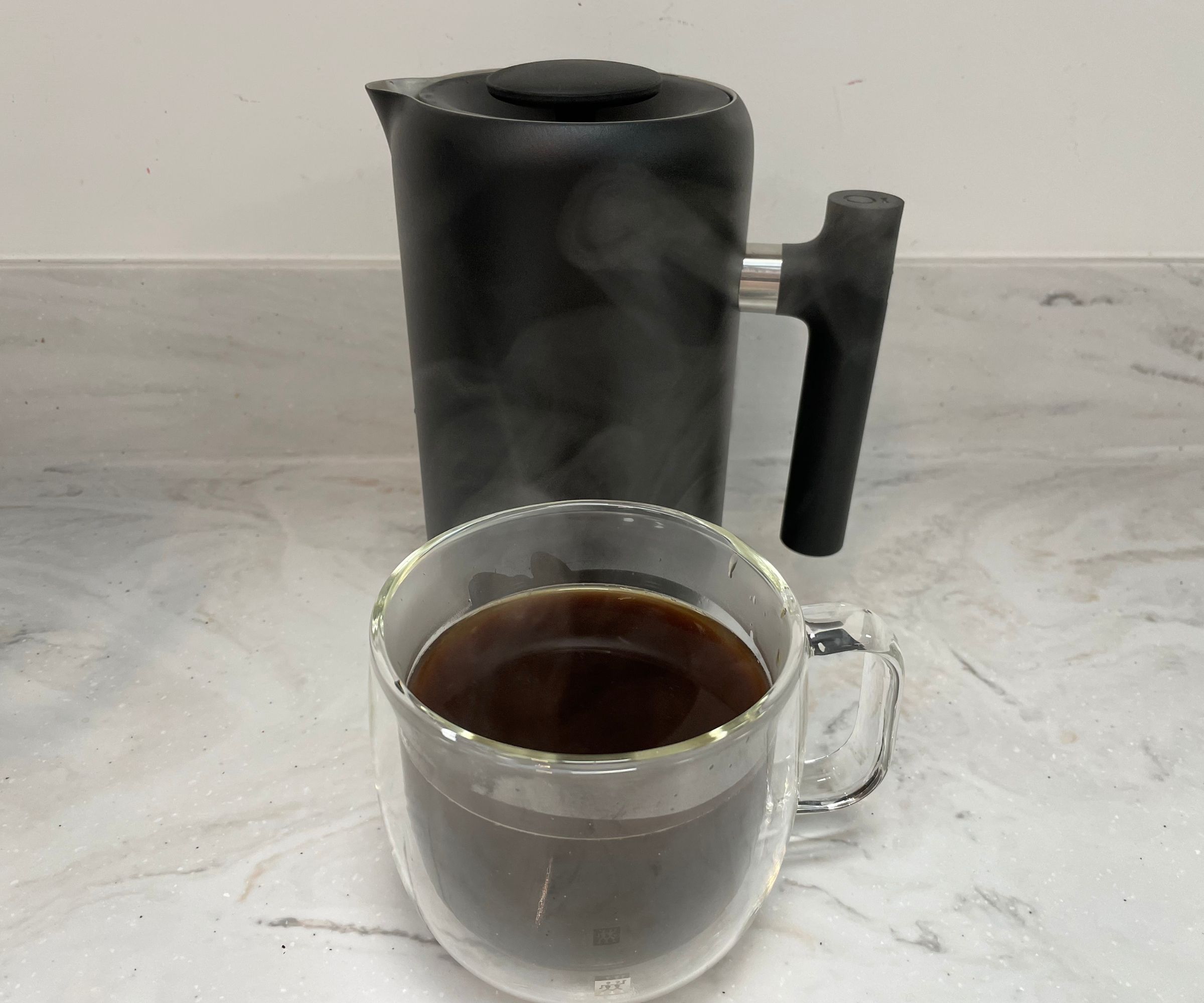
Just pouring coffee out of the Clara, I could see that it was thicker and a much richer brown than all the others we were testing. That was reflected in the flavors; this was the deepest and most intense of all the French presses I tested. Also, because Fellow had instructed me to use the agitator, I'd ended up with the smoothest, most consistently flavored cup of coffee too. I should also note that the all-round filter was really useful. I didn't have to waste any time lining-up filters and spouts. It was a dream to use. There was no dribbling, just a smooth stream of coffee.
The double-walled insulation had played a huge part in the Clara's success. At 200 degrees Fahrenheit, this was a full thirteen degrees hotter than the other cups of coffee made in other French presses. These other models were still seriously good, one of them was even double-walled, but the Clara is a super insulator. I actually had to wait a fair amount of time before I could do my taste tests without burning my mouth. I came back to the Clara a full hour later and the coffee was still steaming and too hot to drink after pouring straight from the carafe. That will be great news if you're a forgetful coffee drinker.
Cleaning, storage, and maintenance

The non-stick lining more than delivers on its promises. Whilst I love the BPA-free plastic lid and handle as well as the PFOA-free lining, these delicate materials mean that you have to wash your French press by hand. This doesn't take long and isn't effortful at all, but it nevertheless requires more thought than a standard French press. The mesh filter is dishwasher safe, but, by the time you've got everything else washed by hand, you'll might as well wash the filter yourself too.
As I said, this is a stylish French press. It cultivates a different aesthetic of the very classic carafes which normally grace Instagram-worthy coffee nooks. It's very modern and minimalist, so would look good on display, but is still small enough to fit in a cupboard or drawer. You can't lose either way.
How does it rate online?

Fellow can be pretty pleased with how the Clara rates online. Customer reviews are almost entirely superlatives: 'this is the greatest French press', 'it's the best insulator', 'the Clara is the sturdiest French press I've ever used'. I found people who say this is their motivation for waking up at 4 am, as well as users who say the double-walls has kept their coffee hot for two to three hours. Expert reviews are all titled in the same way. It's at or near the top of all respectable buying guides, described as a classy option, elevating morning coffee rituals. It's always, always called sleek.
People mention the price, but I didn't find a single reviewer who thought it was bad value. I find that astonishing. You can pick up a Bodum French press at QVCfor around $30, and while it's definitely not as good, I don't think the Clara is $70 better. Whilst I loved the Clara and I could easily justify the price, I really expected more people to tout more popular options which are just 20% of the price. And yet, they didn't.
From browsing the reviews, I would say that the only thing you need to consider (aside from the price) is the handle. You can opt for the classic, matte black finish, which is consistent with the whole of the Clara's design, or you can get a walnut wood handle. Most people liked both, but in a few reviews I read that the walnut wood can show some water marks and water damage. If you're not a meticulous cleaner, I'd opt for the original, non-wooden handle.
How does it compare?

The Fellow Clara sits at a similar price point to the Espro P7, which is in the top spot in our French press buying guide. Neither French press is transparent, which means that they're both more durable than glass models, but it also means that you can't see your coffee brewing in either.
The Espro is 6 oz smaller than the Fellow, which is a whole cup of coffee, so it's a close call as to which one's better. The difference really comes down to aesthetics. The Fellow's design is more deliberate and intentional. Its ergonomic and beautiful, but in a very different way to the Espro. I can't make the call for you here, because aesthetics are so subjective.
Flavor wise, both the Espro and Fellow are top-tier. They deliver smooth, well filtered results. The only difference is that the Fellow has an all-round filter which you don't need to line up with the spout. Plus, the Fellow comes with an agitator to remind you to stir your coffee. Overall, although they're both expert French presses, if you're spending $100, I'd spend mine at Fellow. The only reason not to is if you don't like the curved, matte black aesthetic.
If you didn't plan on spending triple figures on a French press (quite frankly, neither did I), there are still some impressive options on the market. Namely, the Bodum Chambord, available at QVC). This is a classic French press, which has the benefit of both transparency (so you can see your coffee brewing) and the price (it's normally around $30). For a quarter of the price, you get another 12 oz capacity and a decent brew. The only danger is that you might smash it, or forget that you've brewed coffee and come to a cold carafe a few hours later. However, if you don't mind either of these, you can't go wrong. The Bodum is a good French press.
Should you buy it?

It's a tough call for me. I love the Clara. I think it's beautiful and packed with well-considered design features. The fact that you can pour and add the lid on from any angle is truly innovative. It makes delicious coffee, which is well filtered and super smooth, so there's no question over the aesthetics or performance of the Clara.
Whether you take the plunge (sorry) depends on how much you'll use it. If you only drink French press, there's no doubt about it. Buy the Clara. You deserve it. If you only occasionally opt for French press coffee amongst a repertoire of alternative brewing styles, it might be worth browsing some of the other models in our buying guide for the best French presses.
How we test
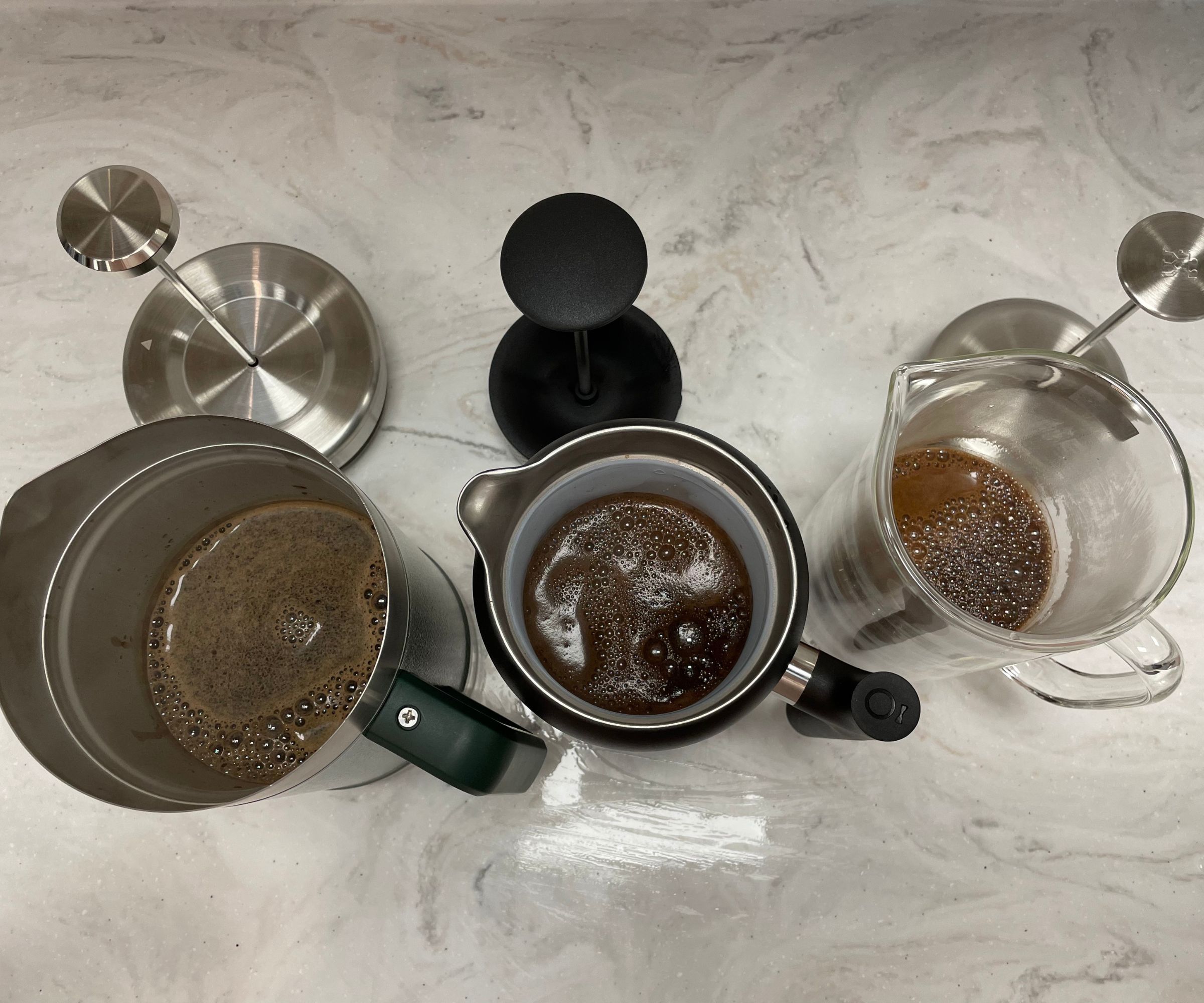
At Homes & Gardens we take pride in our coffee testing process. I, and a team of experts, take every product we recommend to our dedicated test kitchen. From there, we carry out a series of standardized tests, designed to help us discern a) how good a French press is and b) how it compares to other French presses on the market.
We make notes from the beginning of the process, looking at the unboxing and aesthetics of every French press. Then, we'll use them to brew a full carafe of coffee. All of our French presses (unless they instruct otherwise) are brewed to a ratio of one part coffee to twelve parts boiling water. We give the French press five minutes to brew and then take the temperature of our coffee before plunging it, pouring a cup, and engaging in a taste test. The best French press coffee tastes rich and full bodied, a little more acidic than pour-over, and also a little more bold. We'll check the bottom of our cup for sediment and stray coffee grounds, because this is an indication that either the seal isn't tight enough or the filter isn't fine enough.
Once the taste tests are done, we wash up and pack away the French press, so we can catch any quirks that you might experience in your day-to-day usage of a French press. For example, if it's not dishwasher safe, you'll need to dedicate some more time to cleaning it up and packing it away. This isn't always a problem, but it's worth knowing about.
If you're interested in finding out more, you can visit our dedicated page for how we test coffee makers.

Laura is our eCommerce editor. As a fully qualified barista, she's our expert in all things coffee and has tested over thirty of the best coffee makers on the market. She has also interviewed Q-Graders and world-leading experts in the coffee industry, so has an intimate knowledge of all things coffee. Before joining Homes & Gardens, she studied English at Oxford University. Whilst studying, she trained as a master perfumer and worked in the luxury fragrance industry for five years. Her collection of home fragrance is extensive and she's met and interviewed five of the world's finest perfumers (also known as 'noses'). As a result of this expansive fragrance knowledge, she always puts quality and style over quantity and fads. Laura looks for products which have been designed simply and with thoughtful finishes.